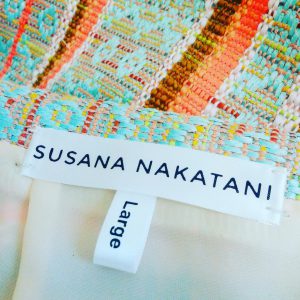
100% Cotton
 When I think of cotton, I think of softness, purity, calm. Cotton is all around us. It is probably the first material we touch after birth and the last before we die.
When I think of cotton, I think of softness, purity, calm. Cotton is all around us. It is probably the first material we touch after birth and the last before we die.
Cotton has been used for 5,000 years and today the demand and the production are growing and growing as its applications do.
Why do we like cotton clothing?
Cotton is comfortable and most important, affordable. We can use cotton to tailor any piece of clothing: dresses, t-shirts, shirts, socks, underwear, trousers, jeans, evening gowns…
Depending on how the raw material is treated it can completely change appearance.
Why do we like cotton clothing?
Cotton is comfortable and most important, affordable. We can use cotton to tailor any piece of clothing: dresses, t-shirts, shirts, socks, underwear, trousers, jeans, evening gowns…
Depending on how the raw material is treated it can completely change appearance.
Wearing cotton we can sweat and still feel dry. We can move freely. We can iron it and wash it with almost no precautions.
What’s the problem with cotton?
After this speech, is it possible to be against cotton?
Yes, it is.
Since cotton is such a wonderful material, its worldwide demand has disproportionately increased in the last years, making a deep impact in 3rd World producing countries.
There are two main problems:
- Small producers who, in the past, had a diversified production in order to protect themselves from a cotton crisis had been forced to focus on cotton production now.
- The pressure they experience to produce cheaper has led them to use heavy pesticides (dangerous for both, their health and the environment). and lower their selling prices.
Here’s a short video about it: The conventional trap
This is a very important problem since the biggest producers of cotton in the world are countries like India, China or Pakistan.
The solution
Luckily, there is always a solution. Recently the voices to stop the crazy growing of cotton across the world have intensified and there are many interesting alternatives out there.
Organic cotton
The idea of producing a free-pesticide/chemicals cotton and not genetically modified plants is very attractive. Certified organic cotton also assures that the production respects human rights ( no children work, no over exploitation/slavery, fair price).
It is easy to think that this kind of cotton would be more expensive but, amazingly, it is not. The money saved on pesticides can cover the increase of price in other parts of the production.
Substitutes
Diversifying the production of fibers can also help. There are some interesting, suitable and relatively cheap alternatives like jute, ramie, bamboo or hemp.
Recycling
One of the best solutions is to recycle.
We all have the need to get new stuff from time to time. However, to create something new we can start from some other thing that had a previous life. Using old clothing to make new ones or to buy recycled fabric is a very smart option.
Of course, the future and the solution is always in our hands . It is extremely important to understand that every consuming choice we make has an impact in societies, environment and even on ourselves.
Small changes in our habits can make a very big difference.
Wearing cotton we can sweat and still feel dry. We can move freely. We can iron it and wash it with almost no precautions.
What’s the problem with cotton?
Since cotton is such a wonderful material, its worldwide demand has disproportionately increased in the last years, making a deep impact in 3rd World producing countries.
There are two main problems:
- Small producers who, in the past, had a diversified production in order to protect themselves from a cotton crisis had been forced to focus on cotton production now to cover the demand.
- The pressure they experience to produce cheaper has led them to use heavy pesticides (dangerous for both, their health and the environment) and lower their selling prices.
- While the main production is localized in undeveloped countries, the control of the cotton market is in the hands of big corporations.
There is a very interesting documentary, available on Yutube that ilustrates the reality of cotton production: The conventional trap
The Solution
Luckily, there is always a solution. Recently the voices to stop the crazy growing of cotton across the world have intensified and there are many interesting alternatives out there.
Organic Cotton
The idea of producing a free-pesticide/chemicals cotton and not genetically modified plants is very attractive. Certified organic cotton also assures that the production respects human rights ( no children work, no over exploitation/slavery, fair price).
It is easy to think that this kind of cotton would be more expensive but, amazingly, it is not. The money saved on pesticides can cover the increase of price in other parts of the production.
Substitutes
Diversifying the production of fibers can also help. There are some interesting, suitable and relatively cheap alternatives like jute, ramie, bamboo or hemp.
Recycling
One of the best solutions is to recycle.
We all have the need to get new stuff from time to time. However, to create something new we can start from some other thing that had a previous life. Using old clothing to make new ones or to buy recycled fabric is a very smart option.
The future and the solution is in our hands. It is extremely important to understand that every consuming choice we make has an impact in society, environment and even in ourselves. Small changes in our habits can make a very big difference.
If you want to learn more about sustainable fabric alternatives, check my article about Eco-Friendly Fabrics.

 Next Post
Next Post


